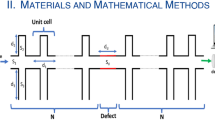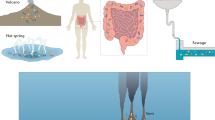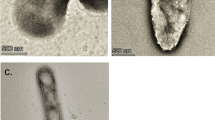Abstract
IN biological work, oxygen has often to be supplied to an organism by bubbling air, or some other oxygen-containing gas, through the culture medium. The rate at which oxygen is available for consumption by the organism is frequently limited by the rate at which oxygen dissolves from the gas phase. Although this has been realized1, there has been little attention given to this point in the literature. An easy method of assessing the effect of aeration has been developed, using a polarograph to measure the concentration of dissolved oxygen2.
This is a preview of subscription content, access via your institution
Access options
Subscribe to this journal
Receive 51 print issues and online access
$199.00 per year
only $3.90 per issue
Buy this article
- Purchase on SpringerLink
- Instant access to full article PDF
Prices may be subject to local taxes which are calculated during checkout
Similar content being viewed by others
References
Olson and Johnson, J. Bact., 57, 235 (1949).
Petering and Daniels, J. Amer. Chem. Soc., 60, 2796 (1938).
Sherwood, T. K., “Absorption and Extraction”, 64 (McGraw-Hill, 1937).
Author information
Authors and Affiliations
Rights and permissions
About this article
Cite this article
WISE, W. Aeration of Culture Media. Nature 165, 249 (1950). https://doi.org/10.1038/165249a0
Issue date:
DOI: https://doi.org/10.1038/165249a0
This article is cited by
-
Physiological studies on the actinomycetes
The Botanical Review (1953)
-
Some mycological aspects of penicillin production
The Botanical Review (1950)



